Posts Tagged: narrowleaf milkweed
Welcome to the World of Monarchs, Greta!
Welcome to the world of monarchs, Greta! We don't normally name the monarch butterflies we rear, but we decided that the first one reared from an egg "The Greg Way" would be named for Greg--naturalist Greg Kareofelas, associate at the Bohart Museum...
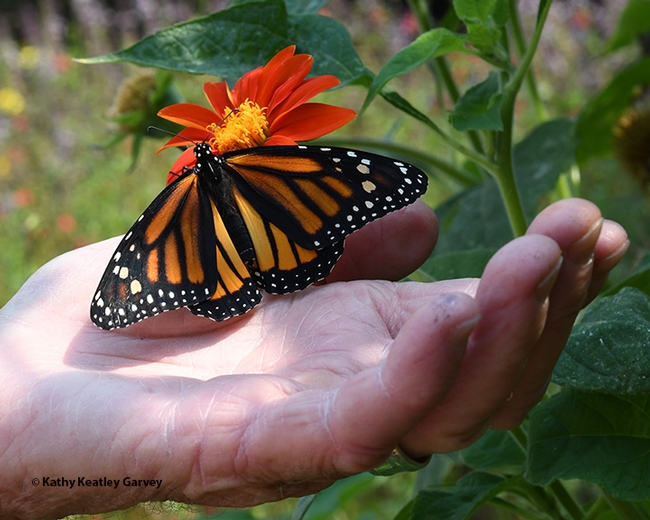
This monarch caterpillar was reared from an egg collected on a tropical milkweed, Asclepias curassavica, in a Vacaville pollinator garden. (Photo by Kathy Keatley Garvey)
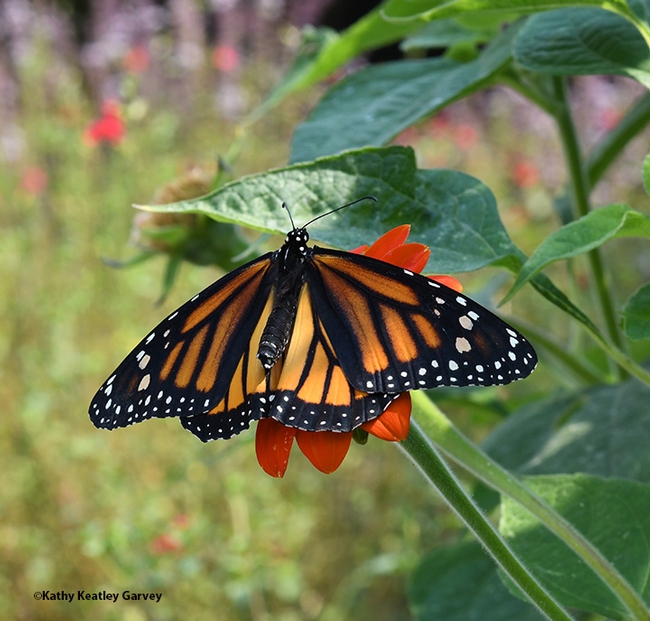
The newly eclosed monarch caterpillar named "Greta" latches onto a Mexican sunflower, Tithonia rotundiflora. (Photo by Kathy Keatley Garvey)
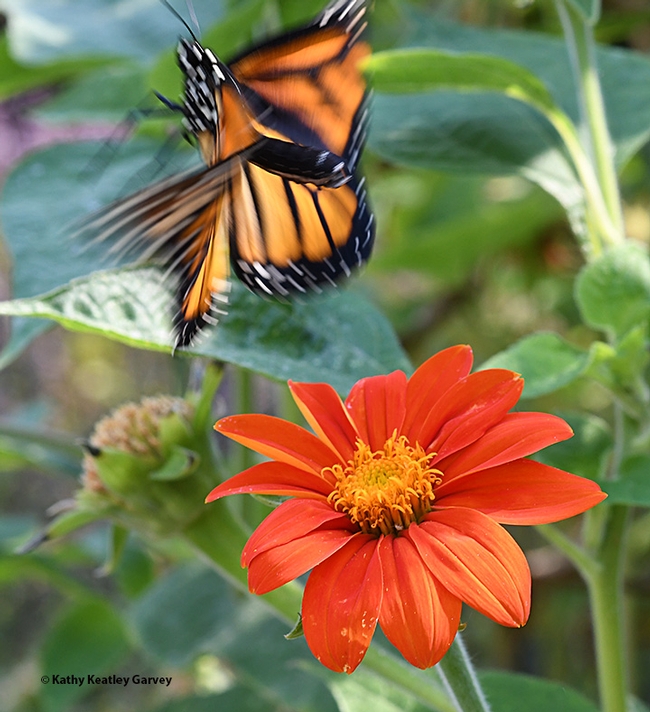
Greta, a monarch butterfly reared from an egg, is anxious to get where she's going. And fast. (Photo by Kathy Keatley Garvey)
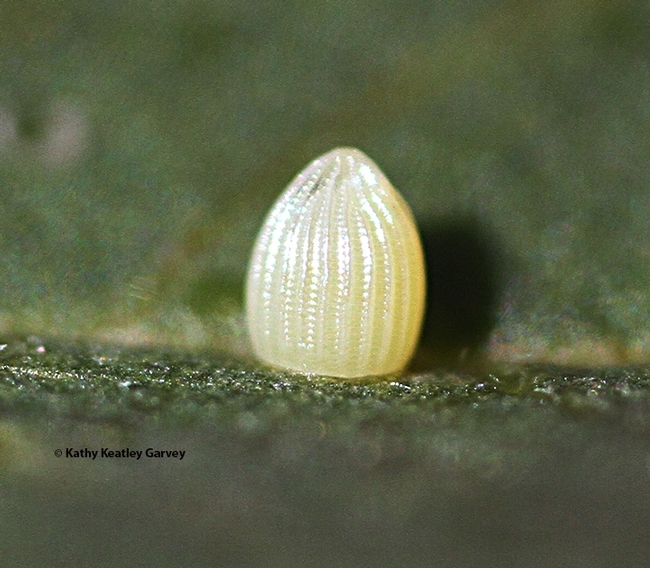
Monarch butterflies start out as a near microscopic egg. This image was taken with a Canon MPE-65mm lens. (Photo by Kathy Keatley Garvey)
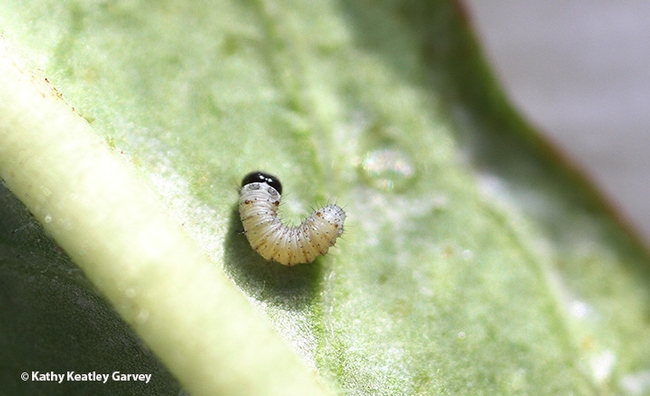
After hatching from egg to larva (caterpillar), it eats its shell and then begins munching on milkweed. (Photo by Kathy Keatley Garvey)
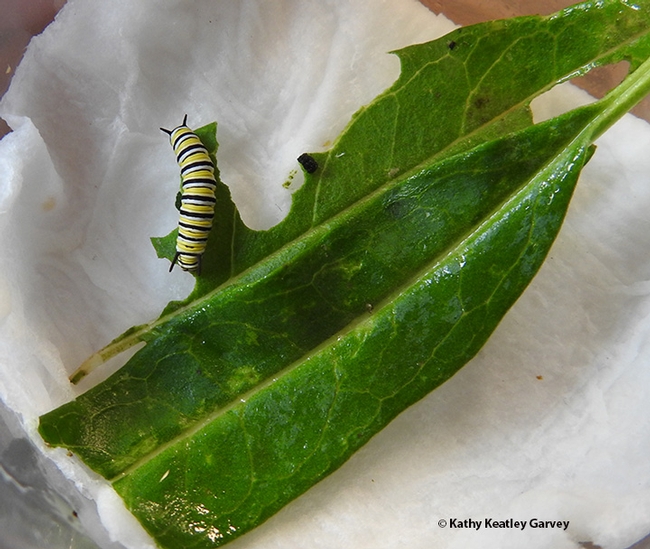
The monarch caterpillar munches milkweed; it will go through five instars. (Photo by Kathy Keatley Garvey)
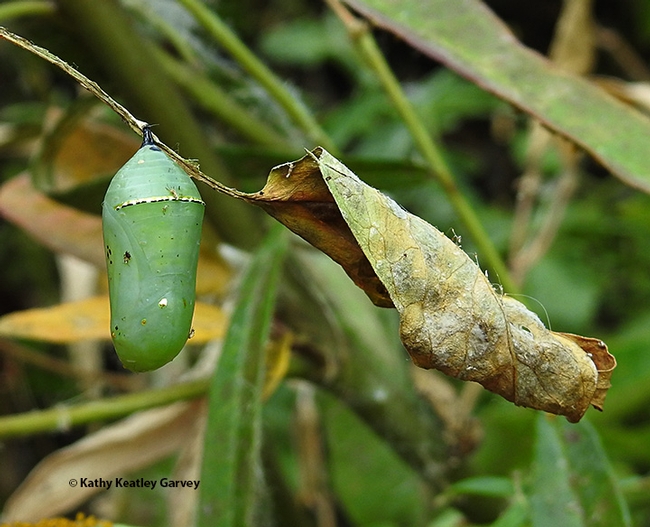
The jade-green monarch chrysalis is one of nature's jewels. (Photo by Kathy Keatley Garvey)
A Bee-Line Toward the Tropical Milkweed
Honey bees just can't get enough of our tropical milkweed, Asclepias curassavica. We plant three species of milkweed (the host plant for the monarchs), but both the monarchs and the honey bees gravitate toward A. curassavica,...
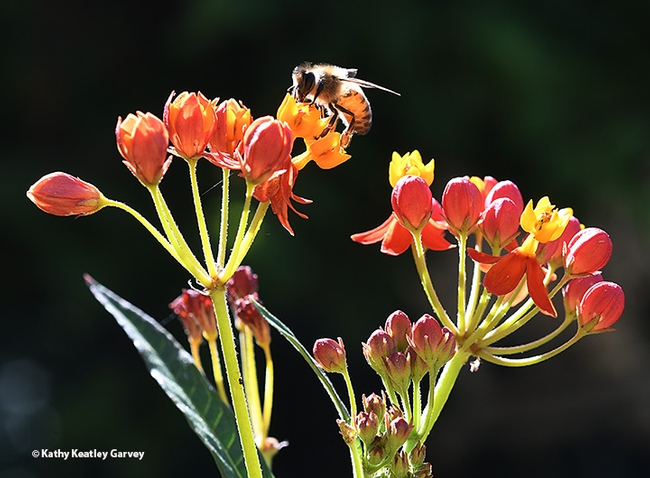
A honey bee forages on tropical milkweed, Asclepias curassavica, in a Vacaville pollinator garden on July 27. (Photo by Kathy Keatley Garvey)
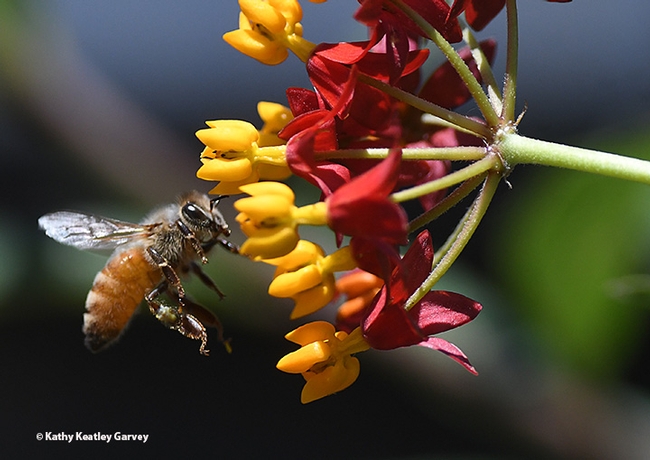
A honey bee makes a beeline for the tropical milkweed,Asclepias curassavica. (Photo by Kathy Keatley Garvey)
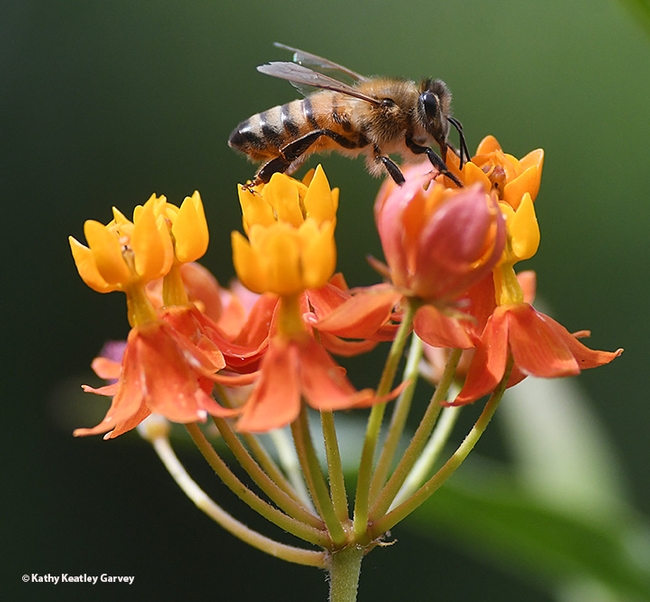
Honey bee nectaring on the tropical milkweed. (Photo by Kathy Keatley Garvey)
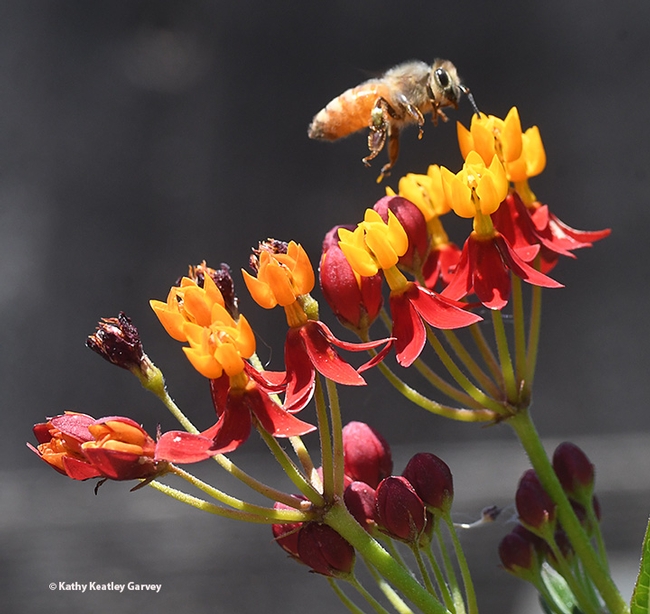
Up, up and away toward the next tropical milkweed blossom. (Photo by Kathy Keatley Garvey)
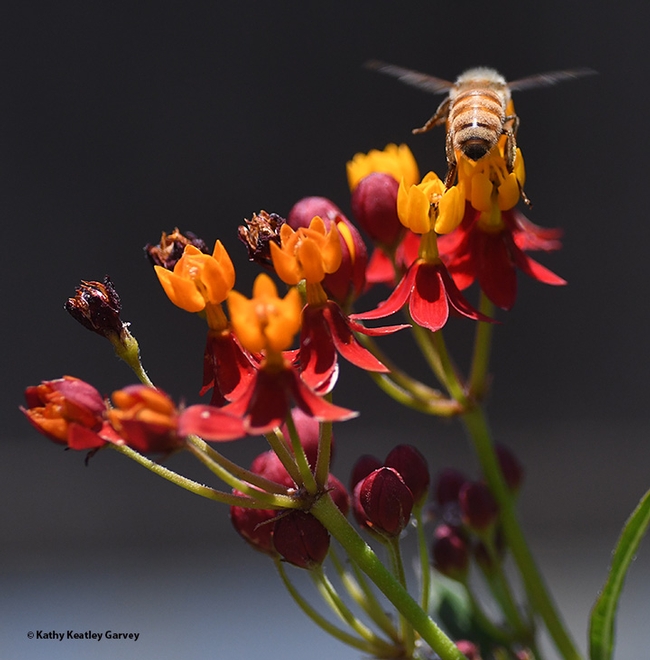
Honey bee takes flight, returning to her colony. (Photo by Kathy Keatley Garvey)

